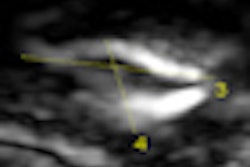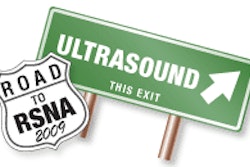Dear Ultrasound Insider,
Breast lesions categorized as ultrasound BI-RADS 4 run the gamut of clinical suspicion, from those with just a slight chance of malignancy to those that are screaming to be biopsied.
Fortunately, contrast-enhanced ultrasound (CEUS) can do a better job at categorizing these lesions than conventional ultrasound, enabling clinicians to upgrade or downgrade lesions as appropriate, according to research from Huashan Hospital in Shanghai, China.
CEUS produced higher accuracy and specificity than conventional ultrasound in 31 biopsy-proven patients, opening the door for better treatment plans and fewer unnecessary biopsies, according to Dr. Ping Xu. She shared the research during a scientific session at the 2009 RSNA meeting in Chicago.
As an Ultrasound Insider subscriber, you have access to this Insider Exclusive before it is published for the rest of our AuntMinnie.com members. To learn more, click here.
In other current RSNA coverage in your Ultrasound Digital Community, elastography was found to offer the promise of reduction in breast biopsies. Kate Madden Yee has our coverage of the Elizabeth Wende Breast Care research, which you can reach by clicking here.
Also, elastography can differentiate between malignant and benign skin lesions, according to research from the University of Maryland School of Medicine in Baltimore.
Stay tuned for more RSNA ultrasound coverage in the coming weeks.
In other news, chest ultrasound was recently found to provide the same diagnostic information as chest CT in children with complicated pneumonia and parapneumonic effusion.
In echocardiography developments, researchers from the University of Texas Health Science Center in Houston made the case last month for screening all middle-school-aged children for heart abnormalities with a targeted medical history, physical exam, electrocardiogram (ECG), and an echocardiograph. You can learn more about their presentation at the American Heart Association (AHA) meeting in Orlando, FL, by clicking here.
Also, another AHA presentation found that the combination of echocardiography and an ECG was best for identifying heart flaws in athletes.
Do you have an idea for a topic you'd like to see covered? As always, please feel free to drop me a line.




















